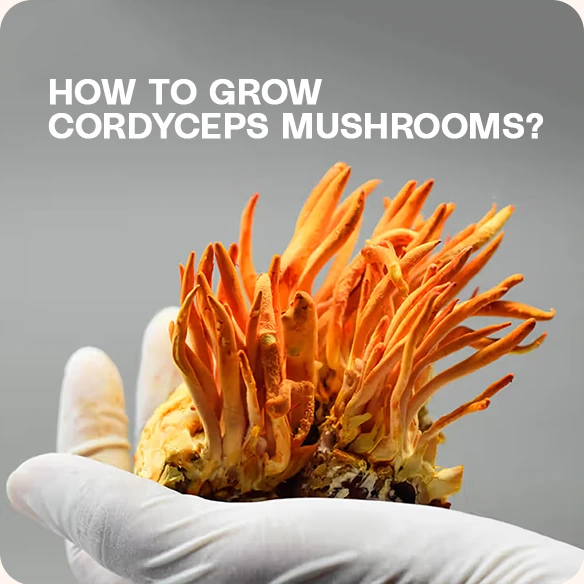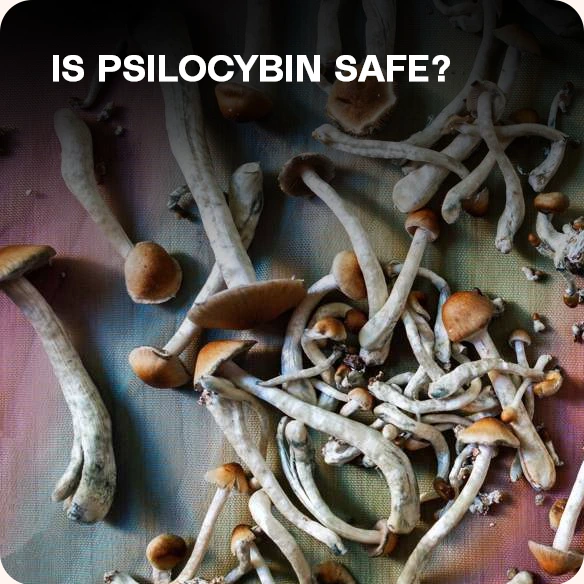Magic mushrooms stay in your body for about 24 to 48 hours, but they can be detected in certain drug tests for up to 90 days. In this guide, we’ll explain how long these shrooms remain in your system, whether they show up on drug tests, and if there are ways to get them out of your system.
Keep reading to learn how long magic mushrooms last in your body!
Key Takeaways
- Magic mushrooms can stay in your system for about 24 to 48 hours, depending
on the dosage and your metabolism. - Magic mushrooms usually don’t show up on standard drug tests, but specialized
tests like hair and urine tests can detect them. - The high of magic mushrooms can last for 4-6 hours, but they can be detected
in a drug test for up to 90 days.
How Long Do Shrooms Stay In Your System?
Shrooms stay in your system for 24 to 48 hours but the time it takes to leave your body can vary depending on your weight, metabolism, and how much you took.
Your kidneys process the psilocybin and start clearing it out pretty quickly. About 66% of it is gone within the first 3 hours. After 24 hours, psilocybin is usually undetectable in your urine.
Do Magic Mushrooms Show Up On A Drug Test?
Magic mushrooms don’t show up on standard drug tests like urine tests. However, certain tests, like hair follicle tests, can detect shrooms, especially if you’ve taken them more than once.
Types of Drug Tests That Can Detect Magic Mushrooms
Certain specialized drug tests, like urine tests and hair follicle tests, can detect the magic mushrooms in the body by identifying psilocybin.
- Urine Tests:
Urine tests are commonly used to detect recent use. After taking magic mushrooms, psilocybin is metabolized into psilocin, which can be detected in urine for up to 1-3 days. These quick and easy tests make them a common choice for detecting recent use. - Hair Follicle Tests:
Hair follicle tests look for drug traces in your hair. These tests can detect magic mushrooms for up to 3 months after use. These tests vary in how well they detect shrooms, depending on the test’s sensitivity, how much and how often you took shrooms, and your metabolism.

How Long Can Shrooms Be Detected in a Drug Test?
The time shrooms can be detected in a drug test depends on the type of test and factors like your metabolism and body composition. In urine tests, psilocybin can be detected for 1 to 3 days after use. However, hair follicle tests can detect shrooms for up to 90 days.
Several factors can influence how long shrooms stay in your system:
- Hydration: Drinking plenty of water might dilute psilocybin in urine, shortening detection time.
- Frequency of Use: Regular use of shrooms can lead to longer detection times.
- Body Composition: People with higher body fat may store psilocybin metabolites longer.
Understanding these factors is important if you’re concerned about drug testing, as they can affect how long shrooms remain detectable in your system.
Are There Any Ways to Get It Out of Your System?
Not really.
Drinking water might help move psilocybin through your system faster, but it won’t make a significant difference if you’re trying to avoid detection.
If you’re concerned about a drug test, the best thing to do is stop taking shrooms as soon as possible. There aren’t any guaranteed methods to get psilocybin out of your system quickly, so your body will need time to naturally clear it out.
How to Take Magic Mushrooms?
Taking magic mushrooms can be a nice trip if you approach it carefully.
There has also been growing interest in the potential medicinal benefits of psilocybin, with ongoing research exploring its effects on mental health conditions such as depression and anxiety.
Here’s a simple, step-by-step guide to help you get started:
- Prepare Your Set and Setting
- Set: Your mindset is crucial. Make sure you’re in a positive, calm state of mind before taking shrooms. If you’re feeling anxious, stressed, or down, it might not be the best time.
- Setting: Choose a comfortable, safe, and familiar environment. Being in a place where you feel secure, like your home, can help create a nice trip. Avoid crowded or unfamiliar places.
- Choose Your Method
- Raw or Dried Mushrooms: You can eat shrooms as they are, but remember that they may have
a strong taste. - Tea: Brewing shrooms into tea can make them easier to take and gentler on your stomach.
- Capsules: If you prefer a more controlled dosage, capsules are a good option.
- Start with a Low Dosage
Start with a small amount, especially if you’re new to mushrooms. A low dose lets you see how your body reacts without
overwhelming you. For beginners, 1 to 1.5 grams of dried mushrooms is enough.
Wait at least an hour after your first dose to see how you feel before deciding if you want to take more.
- Stay Hydrated and Relax
Drink water to stay hydrated, but don’t overdo it. Sipping water throughout your trip is enough.
Relax and let the trip unfold. If you start feeling anxious, take deep breaths and remind yourself that the trip is temporary.
- Have a Trusted Friend Nearby
If it’s your first time or you’re unsure, having a sober friend with you can be comforting. They can help guide you through the trip if things feel overwhelming.
- Be Patient and Enjoy
Shrooms take about 30 minutes to an hour to kick in, so be patient. Once the effects start, go with the flow and enjoy the trip. By following these steps, you can help ensure a safe and sound trip with magic mushrooms. Remember, taking things slow and listening to your body is always better.
How Long Does the High Last?
The high lasts between 4 to 6 hours, but it can vary depending on factors like how much you took, your body, and how you took them. During this time, you might feel changes in perception and mood, which can be powerful for some people.
How To Join The Microdosify Community For Holistic Therapy And Microdosing Guidance
Joining the Microdosify community provides access to holistic therapy and expert guidance on microdosing, helping people achieve a balanced mental state.
Upon joining the Microdosify community, individuals are welcomed into a supportive environment to connect with like-minded individuals on a journey toward well-being.
This community offers a wealth of resources, including educational materials, personalized dosage recommendations, and access to experienced mentors who can provide insights and support throughout the microdosing process.
Participants in the Microdosify community benefit from shared experiences, gaining valuable insights and perspectives that contribute to their holistic health and well-being.
Through guided use and peer interactions, members can navigate their microdosing journeys with confidence and support, fostering a sense of community and understanding.
Conclusion
Magic mushrooms typically leave your body within 24 to 48 hours, but factors like dosage, metabolism, and body composition can influence this timeline. While psilocybin is usually undetectable in urine after 24 hours, specialized tests like hair follicle tests can detect shrooms for up to 90 days.
Understanding how long shrooms stay in your system is crucial, especially if you’re concerned about drug tests.
Being informed about how shrooms affect your body and how long they stay in your system can help you make safer and more informed decisions.




